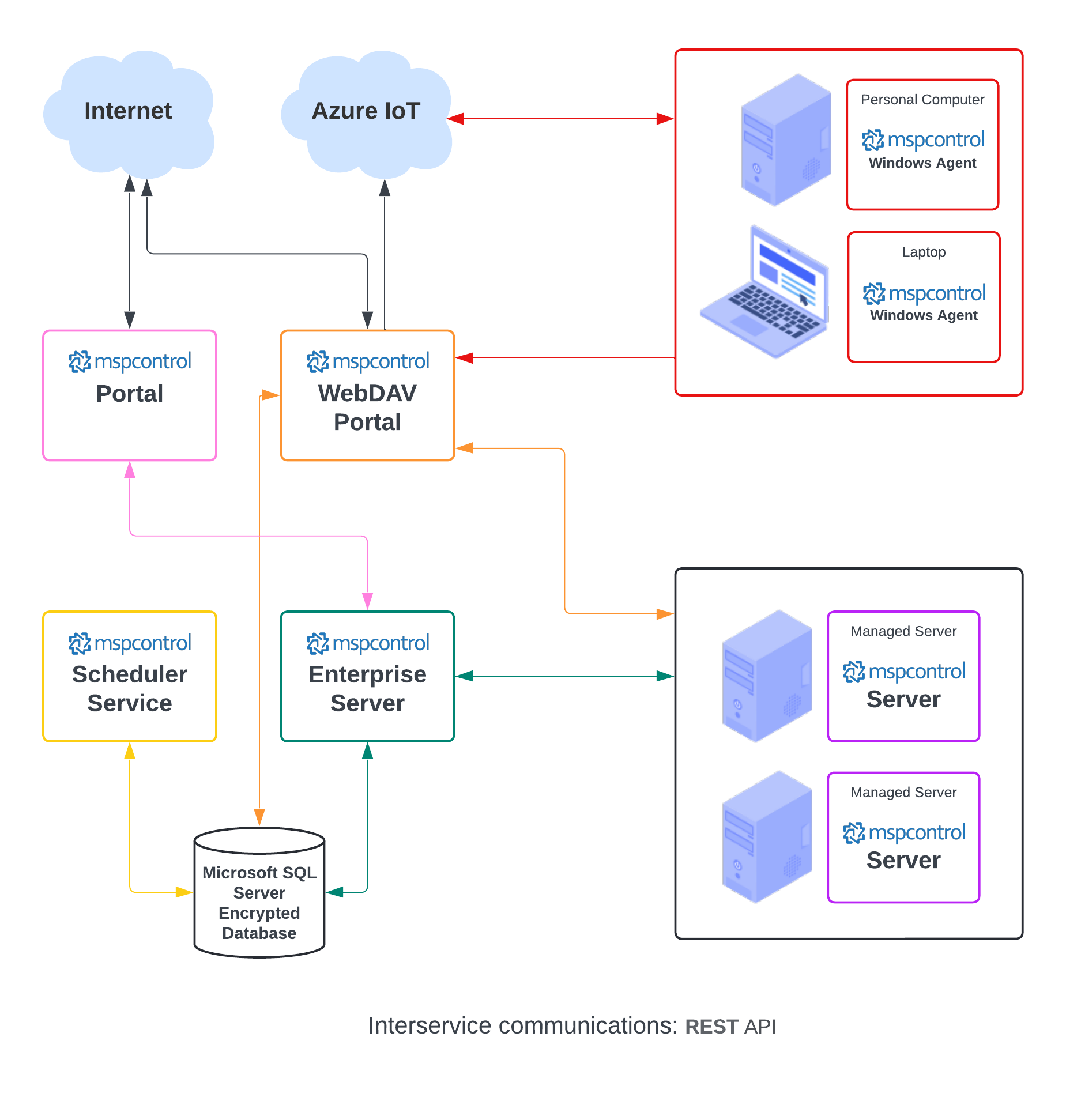
How MSPControl Works
MSPControl is a distributed, web-based application composed of six integral components:
1. Portal
2. Enterprise Server
3. Server
4. Scheduler
5. End-User Portal (WebDAV Portal)
6. Windows Agent
These components are web applications that must be hosted on IIS 7.0 or higher.

Portal
The Portal serves as the user interface, or presentation layer, of MSPControl. It is an ASP.NET application devoid of business logic, communicating with the Enterprise Server via REST to execute various operations. Each visual form and button click triggers an appropriate web service at the Enterprise Server side.
This web application is accessible to external users and operates within an IIS application pool with a “weak” identity.
Enterprise Server
The Enterprise Server is the core component of MSPControl, encapsulating all business logic. It utilizes an SQL Server database to store internal data, such as user accounts, hosting plans, hosted resource information, and service settings.
Every operation in MSPControl is available as a REST web service, facilitating integration with third-party applications. The Enterprise Server can be accessed from various programming environments like .NET, PHP, Java, or Perl.
For managing the hosting environment (e.g., creating websites, FTP and mail accounts, databases), the Enterprise Server communicates with the Server via REST web services. This non-visual web application exposes only web services and is typically accessible only to computers within the hosting environment, with its website listening to internal IP addresses or loopback (127.0.0.1). The Enterprise Server application pool also operates under a “weak” identity.
Server
The Server is a non-visual web application that performs low-level management operations, such as managing files/folders and their permissions, mail, databases, and IIS on target servers.
It acts as a remote “Server Agent” and must be installed on every server in the hosting environment to be managed through the control panel. The Server runs in an application pool with administrative privileges; its identity must be a member of the local “Administrators” group or the “Domain Admins” group if Active Directory management is required.
Scheduler
The Scheduler is a non-visual Windows service that executes all background tasks, including reports, space calculations, and archiving. It works closely with the Enterprise Server component.
End-User Portal (WebDAV Portal)
The End-User Portal provides a visual interface for hosted Active Directory users, offering functionalities such as:
– Viewing and updating personal information (e.g., name, phone number)
– Accessing and managing Cloud Folders
– Resetting passwords
Windows Agent
The Windows Agent is a service installed on Windows PCs or servers that require management. It performs various tasks such as patch management, firewall configuration, monitoring, and auto-configuration, extending the control and automation capabilities of MSPControl to individual machines within the network.

No credit card required for free, limited license.
